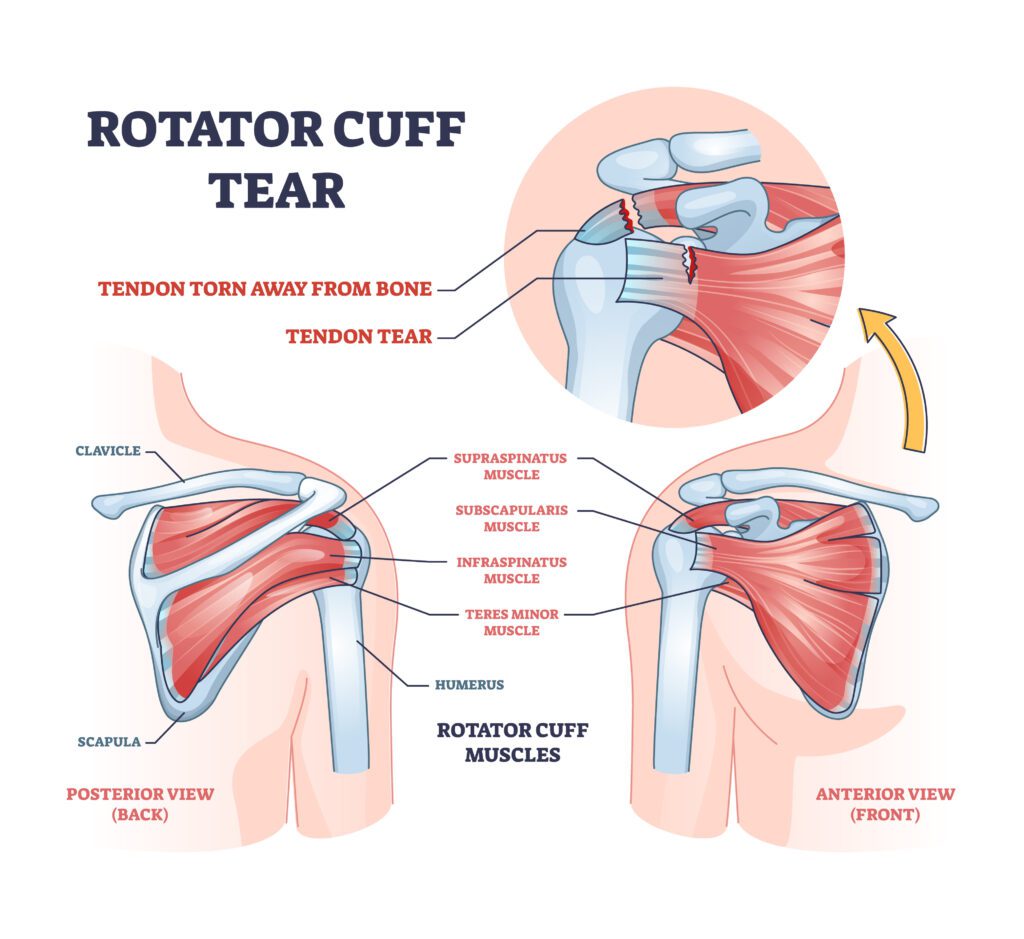What is it?
A rotator cuff tear is a tear in one or more of the four tendons that help stabilise the shoulder and move the arm. Tears can be partial or complete (full-thickness).

Who is at risk?
- Adults over 40, especially over 60
- People in overhead professions or sports
- Those with a history of shoulder injuries
- Smokers (healing is slower)
- Individuals with poor shoulder posture or mechanics
What are some common symptoms?
- Shoulder pain, especially at night or when lifting the arm
- Weakness in the shoulder
- Limited range of motion
- Clicking or popping sounds with movement
- Difficulty performing overhead activities
Causes?
- Acute injury (e.g., fall, lifting something too heavy)
- Degenerative wear and tear (common with age)
- Repetitive overhead activity (e.g., painting, swimming, tennis)
- Poor posture or bone spurs rubbing on the tendon
How is it diagnosed?
- Physical exam (testing strength and motion)
- Imaging tests:
- MRI (best for showing soft tissue tears)
- Ultrasound (can also show tendon damage)
- X-rays (to rule out arthritis or bone spurs)
Can it heal on its own?
- Partial tears may improve with rest and rehab
- Complete tears usually do not heal on their own, but symptoms may become manageable without surgery
How long will recovery take?
- Non-surgical rehab: 2–4 months
- Surgical repair:
- Immobilisation (sling): ~4–6 weeks
- Physical therapy: starts early but continues 3–6 months
- Full recovery: 6–12 months, depending on tear size and adherence to rehab
What does treatment look like?
Non-surgical:
- Rest and activity modification
- NSAIDs (e.g., ibuprofen)
- Physical therapy to strengthen surrounding muscles
- Corticosteroid injections for inflammation
Surgical (if needed):
- Arthroscopic rotator cuff repair
- Open surgery for larger or complex tears
- Surgery is typically not needed, best to consult an orthopaedic surgeon first
How can I prevent this?
- Strengthen shoulder and upper back muscles
- Avoid repetitive overhead lifting
- Use proper lifting technique
- Stretch regularly, especially before sports or heavy work
- Take breaks during repetitive tasks
